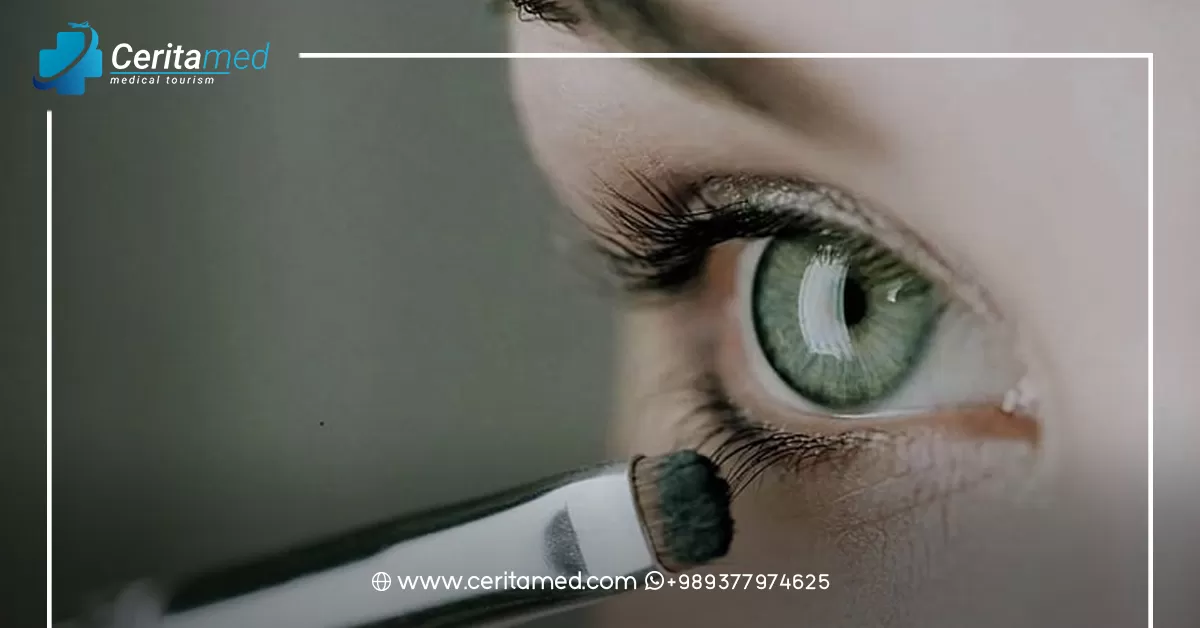
Care after eye color change
People are born with a particular eye color that matures and develops in their most months of age. Eye color can vary from person to person, ranging from blue, black, green, gray, and hazel. These are the permanent eye colors you will own for the rest of your life. For people unsatisfied with their natural eye color, there is a permanent eye color change surgery that they can perform. Eye discoloration enhances your appearance and attractiveness. Many people desire colored eyes. There is a high demand for children's green, blue, or discolored eyes. It provides an attractive look and enhances your look. It is impossible to change eye color naturally, So if you are into the eye color changing process and want to know how to change eye color, this guide will help you provide much-needed information. It is possible to change eye color temporarily and permanently. To temporarily change the color of your eyes, you can wear contact lenses that now come in various colors. But for many people, this is not a satisfactory solution and does not seem very natural. However, if one is tired of discoloration and wants a permanent solution to the eye color, permanent eye color change surgery is the recommended option. Therefore, achieving natural eye color change and attractiveness of eye surgery is the best option. The permanent eye color change procedure will change the time and maintenance of temporary eye color changing methods.
Requirements for changing eye color
The following eye exams are needed to determine if you have a qualified and low risk for an artificial iris, the procedure and what size of implant your doctor will order for you. An ophthalmologist, not an ophthalmologist, does the tests. Before the surgery, these tests can be done here, in Iran Tehran.
- A complete history of the patient's health and eye health
- General eye examination, including visual acuity and refraction without glasses
- eye pressure
- Endoscopy from the anterior angle
- Fundus examination
- Microscopy (endothelial cell count)
- Check for pseudoexfoliation syndrome
- Examination of the peripheral retina and the axial length of the eye
Operation complications
With its precise structure and distinctive characteristics, the eye is already compassionate, and care must be taken when dealing with it, so there may be some potential complications such as.
- Inflammation inside the eye
- high eye pressure
- visual impairment
- Eye nerve damage
- Visual disturbances
- Blockage of some blood vessels in the eye, which can lead to blindness
- Get the right price for you for this operation
Before changing eye color
- Choosing an experienced ophthalmologist specializing in eye plastic surgery
- Choosing a suitable and reputable eye clinic or center
- Carrying out all the tests required by the doctor before the operation, such as checking the eye pressure, making the optometrist, measuring the diameter of the cornea, and others.
- Discuss with the doctor all the details of the operation and technique that suits your condition, and you can ask him to display your image in several different eye colors to choose the right color for you.
- All information about you and your medical history should be remembered, even if it is unrelated to eye diseases.
- If you have had eye operations before, you should tell your doctor.
- Eye color change naturally.
- Questions to ask the ophthalmologist after the operation
- Was the operation suitable for me?
- What tests should I take after the operation?
- How long does recovery take?
- How long does the recovery period last? And when can I see the results?
- Are the operation results permanent, or does it extend for a few years?
- What are the risks and complications after the operation?
The most critical medical recommendations after surgery
- The symptoms of itching and slight pain in some cases are typical symptoms of the surgery, which do not cause concern.
- The patient may suffer from eye tearing and sensitivity to light rays, temporary symptoms that gradually disappear after several days of surgery.
- Blurry vision for one week after surgery is a typical symptom of surgery. The patient generally recovers his sharpness and image after two weeks of surgery.
- The duration of the recovery or rest cycle varies for different patients and may sometimes reach one month from the date of the surgery.
- It is necessary to heed the ophthalmologist's advice regarding the amount and timing of the use of antibiotics and anti-inflammatory drugs prescribed after surgery.
- Refrain from driving, warm-up and heavy sports, in addition to some activities such as lifting bodies or bending the head forward and back, massaging or rubbing the eyes.
- Refraining from the usual daily activities, walking and climbing stairs, is no longer necessary.
Patients who are unable to benefit from eye color-changing technology
- Patients who underwent eye surgeries in the past
- Patients with chronic systemic abnormalities such as diabetes mellitus, Behcet's disease or any other connective tissue disease
- Having acquired immunodeficiency syndrome or AIDS
- Hepatitis B and C infection
Risks to knowing after eye color change surgery
Cosmetic eye color change can cause several problems and damage to the eye, including:
Double vision or loss of sight.
High intraocular pressure, leads to glaucoma and damage to the optic nerve.
In some cases, the cornea may become scarred.
Inflammation of the iris or its surroundings causing pain and blurred vision.
In the event of these complications, the implanted iris must be removed by another surgical procedure.
Click here for more information about eye color change
